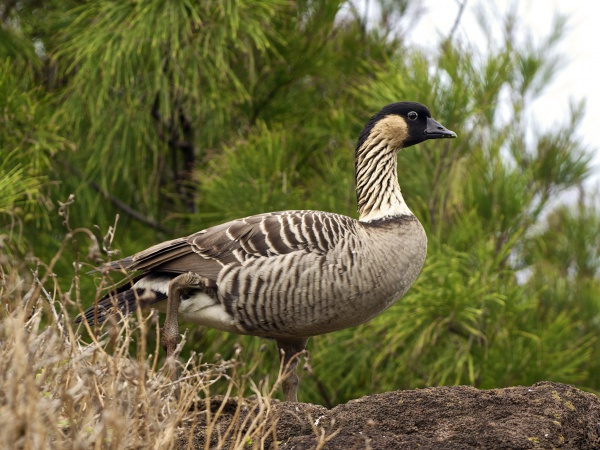Facts About Nene
The nene, or Hawaiian goose, is a unique bird endemic to the Hawaiian Islands and proudly holds the title of Hawaii's state bird. These fascinating creatures can be spotted on islands such as Oahu, Maui, Kaua'i, Molokai, and Hawai'i. The name "nene" is derived from the gentle sound they make, while their scientific name, *Branta sandvicensis*, refers to the old name for Hawaii—the Sandwich Islands.
Believed to have descended from the Canada goose, these medium-sized geese are capable of flight and display different color patterns between males and females. Nenes inhabit a variety of landscapes, including shrublands, grasslands, coastal dunes, and lava plains. Some populations even migrate between their breeding grounds and feeding areas. Unlike many other geese, their breeding season is extended, with nests typically built on land and eggs laid between November and January.
Currently, there are about 2,500 nenes, making them the rarest geese in the world. Their numbers dwindled dramatically due to hunting and the introduction of predators. However, dedicated conservation efforts, including successful captive breeding programs and reintroductions into the wild, have led to a steady increase in their population. Although there are concerns about genetic diversity due to the small initial population, efforts such as those at WWT Slimbridge in England have been instrumental in preventing their extinction. Reintroductions on ranches in Maui have also proven successful, offering hope for the continued recovery of this remarkable species.

 Mexico
Mexico